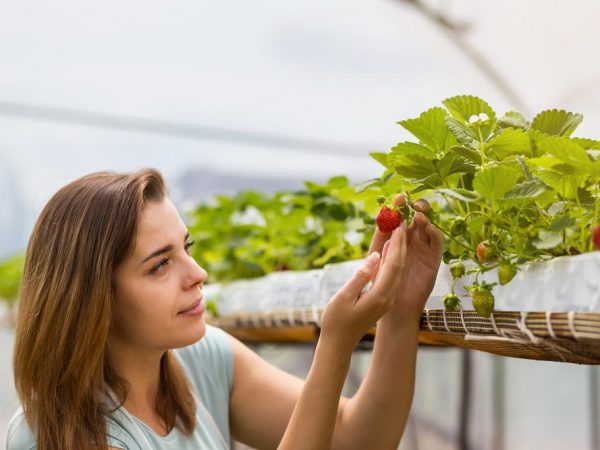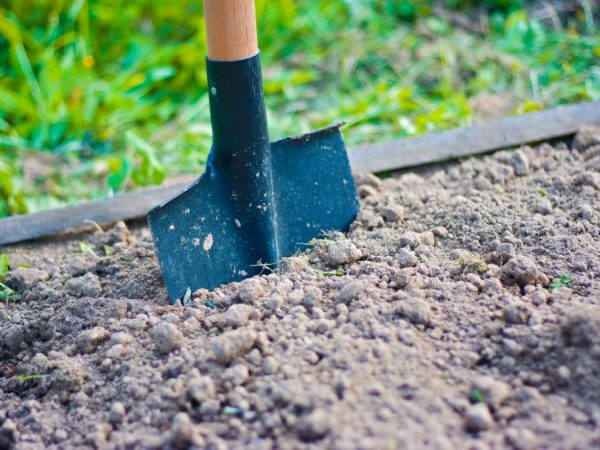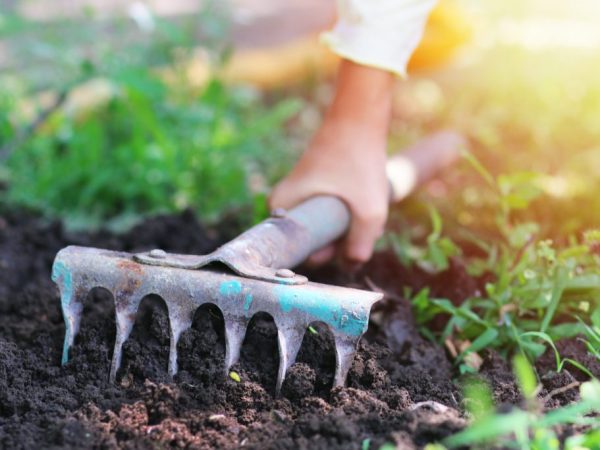Cooking beds for strawberries in the fall - basic rules
Strawberries - everyone's favorite berry is found in almost every summer cottage. The guarantee of an excellent harvest is the right place of cultivation and the degree of soil fertility. It is necessary to prepare the garden bed in the fall, so that upon the onset of warm days in the spring, proceed to planting.

Cooking beds for strawberries in the fall - basic rules
Landing place
Strawberries should be grown exclusively in a well-lit area. In the case of exposure to winds and shade, the taste and yield of the bushes are significantly reduced.
Ideally, the site should be flat, without any particularly noticeable relief changes. However, a slight bias is permitted.
In connection with its direction, the taste of berries will also differ:
- the northern slope is characterized by a larger harvest and a longer ripening period;
- on the southern ones, the first fruits appear earlier and together, have a slight sourness.
It is best to arrange the strawberry patch from east to west. Also, when identifying bushes on a steep hill, it should be borne in mind that in winter strong winds blow off the snow cover from the surface. As a result, the plant, deprived of temporary shelter, will freeze.
Lowlands are also not the best option. High soil moisture contributes to the growth of green mass to the detriment of the fruits, as a result, the berries will be extremely small.
Also, in such conditions, infectious diseases and fungal spores are actively developing, which can lead to the death of a culture.
Crop rotation rules
The best option is to place the young bushes in an area where beans, peas, celery and garlic were cultivated in the previous season.
Bulbous flowers, turnips, radishes are suitable as predecessors. It is better to abandon planting in places where nightshade crops or cucumbers previously grew.
By properly distributing neighbors, you can get rid of slugs. To do this, sow parsley, scaring off with its smell. Beets, radishes and onions also have a beneficial effect on development.
Soil requirements
Strawberries have no special requirements for the chemical composition of the soil. She feels comfortable on almost any soil, with the exception of sandstones. The highest yield is observed when the crop is located on loam.
The acidity should be in a neutral state, the ideal Ph is in the range of 5-5.5 units.
At increased rates, the environment is controlled by adding dolomite flour, cement dust or slaked lime.
The soil is prepared in advance, about a year before the planting date.
An important role is played by the degree of soil nutrition. Ideally, it should contain organic and mineral components.
- At the time of digging the earth (no more than 20 cm in depth), manure is introduced at the rate of 5 kg per 1 sq. M.
- Supplement with 50 g of superphosphate, 25 g of ammonium sulfate and 15 g of potassium chloride, which are spread over the surface and sealed with a garden rake.
It is also allowed to use ready-made commercial preparations in accordance with the instructions on the package.
How to prepare the beds

The garden should be prepared a year before planting.
In order to properly prepare a strawberry garden in autumn, you need to follow various schemes. The simplest and most common are ordinary embankments.
Some gardeners build full-fledged compositions, which, in addition to practicality, also play an aesthetic role. To choose the most suitable one, it is worth carefully examining the advantages and disadvantages that are specific to each.
Low fill beds
The easiest way to organize a garden space does not require additional building materials and financial costs.
It is often used by conservative summer residents if the dacha is located in a lowland or on its territory groundwater passes close to the surface.
It is recommended to make this type of ridge in a trapezoidal shape, due to which shedding from the sides is prevented.
It should be borne in mind that highly elevated beds inhibit crop growth due to the difficult access of the roots to nutrients and moisture. Therefore, the height should be approximately 20 cm, which will additionally allow rainwater not to accumulate in the thickness of the substrate.
The disadvantages include the complexity of cultivating the land in the future and the contact of berries with the soil, as a result of which the fruits become contaminated and their quick spoilage, since high humidity provokes the occurrence of rot and moldy plaque.
Construction principle:
- The soil is dug onto the bayonet of a shovel, the roots of the weed are removed. Additionally, fertilizers necessary for the autumn period are introduced.
- They make elevations, the formation of which occurs through furrows in the middle. The minimum width is 20 cm, in the case of planting plants in several rows, it is increased to 50-60 cm.A gap of half a meter is maintained between each ridge.
High bed
One of the important advantages is ease of use. The principle of construction is to use special fences holding the sides.
Other pluses:
- are an excellent solution for garden plots, which are characterized by elevation differences;
- make it possible to grow crops even in the northern regions due to the heat retained by the barrier (the same function is performed by the organic matter used during digging, which maintains the temperature necessary for the normal development of strawberries during the rotting process);
- no need to weed the paths, just walk them with a lawn mower or lay them out with a decorative stone;
- provide an early harvest, because on such ridges the snow melts first.
Chronology of creation:
- Dig a trench with a minimum size of 40 * 20, where the smallest indicator is height, the largest is width. A frame is installed along the perimeter. Planks, bricks, slate are used as material. Natural stones are not suitable for such purposes due to the fact that they cool quickly in the evening and, accordingly, do not maintain the conditions necessary for thermophilic strawberries.
- The bottom is laid with a drainage made of expanded clay, wood chips or small branches, the recommended thickness is 20 cm.
- An organic layer is distributed from above, which serves as an additional feed to the plant. For him, dry foliage, weeds, straw are used. The next stage is the incorporation of manure or peat in a rotted state.
- At the end, the space is filled with the prepared substrate. Level with a rake. It is possible to plant seedlings on such beds in 2-4 rows, depending on the dimensions of the constructed structure.
Beds under agrofibre

The garden must be done in a sunny place.
Such beds practically do not require weeding, and the material used acts as mulch. In addition, you can be sure that the fruits will not rot under the influence of high humidity when in contact with a wet substrate.
The use of agrofibre also allows the soil to be naturally heated to a comfortable temperature for the plant and to ensure the degree of aeration at the proper level.
The principle of creation coincides with that which must be adhered to when constructing low embankments. The only difference is the coating of the surface with breathable black agrofibre, which acts as a protective barrier.
To place strawberry seedlings in the ground, you need to cut the fabric in the shape of a cross in the right place, having previously drawn the markings for even distribution.
Strawberries in the trenches
A compromise option, somewhat similar to high beds. In this case, shallow trenches of 40 cm are dug, reaching half a meter in width.
A mixture of manure and rotten sawdust is laid at the bottom, which will act as an additional feed for the next several years.
A prepared soil mixture is distributed on top, consisting of:
- 2 parts of garden soil;
- 2 parts of humus;
- 0.5 parts of river sand;
- 1 part forest soil with deciduous litter.
Additionally, wood ash is introduced in a ratio of 1 liter per 1 sq.m., abundantly watered and covered with foil.
Decorative vertical beds
The best way to maximize the use of the territory of the personal plot. Allows you to significantly save space without reducing yields. They give the garden a certain grace due to their high decorative qualities.
There are several variations in the construction of a structure, one of which is the installation of wooden boxes according to the principle of steps.
Polypropylene pipes are also actively used by gardeners. They are placed both horizontally, attached to the facade of the house using clips and self-tapping screws, and in a vertical position.
In the latter case, it is necessary to make holes for strawberry seedlings no more than 5 cm in diameter, distributing them along the perimeter of the entire surface.
- Cons: The roots of the plant are far from the natural source of moisture. Watering is systematized by first placing a hose with the smallest perforation inside, which should be regularly filled with liquid.
- The main advantage: upon the onset of severe frosts, the garden bed can be moved to a place with the mildest microclimate conditions. When cultivating remontant varieties, you can feast on juicy berries all year round.
Summing up
Regardless of which way of growing strawberries the gardener decides to go - standard or more labor-intensive, pursuing the additional goal of decorating the garden, the unchanged rule for obtaining a bountiful harvest is compliance with the requirements of crop rotation, as well as agricultural standards.

